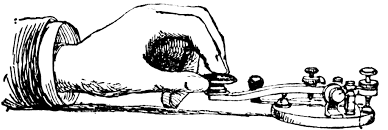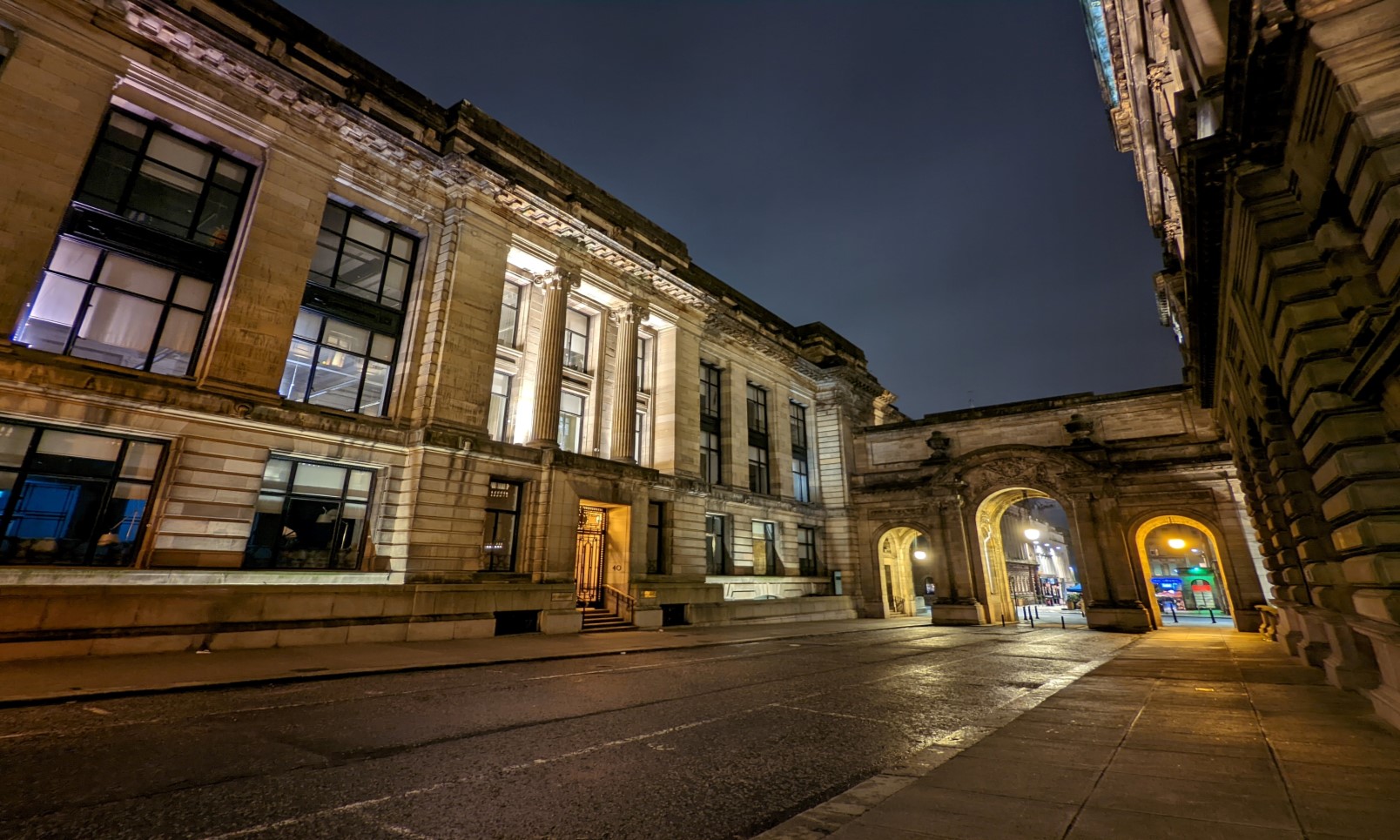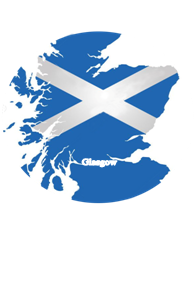HF Contest Committee vacancy
Membership Services scheduled downtime
Key messages from November’s VLT meeting
November 2019 VLT meeting
News from YOTA 2019 Netherlands
Where Did 73 Come From?
_ _ . . . . . . _ _

Glen Zook, K9STH, posted this to the Heathkit mailing list:
Many amateurs already know that “73” is from what is known as the “Phillips Code”, a series of numeric messages conceived for the purpose of cutting down transmission time on the old land telegraph systems when sending text that is basically the same.In the April 1935 issue of QST on page 60 there is a short article on the origin of 73. This article was a summation of another article that appeared in the “December Bulletin from the Navy Department Office of the Chief of Naval Operations”. That would be December of 1934.
The quotation from the Navy is as follows: “It appears from a research of telegraph histories that in 1859 the telegraph people held a convention, and one of its features was a discussion as to the saving of ‘line time’. A committee was appointed to devise a code to reduce standard expressions to symbols or figures. This committee worked out a figure code, from figure 1 to 92. Most of these figure symbols became obsolescent, but a few remain to this date, such as 4, which means “Where shall I go ahead?’. Figure 9 means ‘wire’, the wire chief being on the wire and that everyone should close their keys. Symbol 13 means ‘I don’t understand’; 22 is ‘love and a kiss’; 30 means ‘good night’ or ‘the end’. The symbol most often used now is 73, which means ‘my compliments’ and 92 is for the word ‘deliver.’ The other figures in between the forgoing have fallen into almost complete disuse.”
One of the chief telegraphers of the Navy Department of Communications, a J. L. Bishop, quoted from memory the signals that were in effect in 1905:
1 Wait a minute 4 Where shall I start in message? 5 Have you anything for me? 9 Attention or clear the wire 13 I do not understand 22 Love and kisses 25 Busy on another circuit 30 Finished, the end-used mainly by press telegraphers 73 My compliments, or Best Regards 92 Deliver Now days, 22 has become 88 (love and kisses). I don’t know when this came about. 30 is still used in the newspaper and magazine business to indicate the end of a feature, story, or column. And, of course, 73 is still used by amateur radio operators to mean “best regards”.Making any of these numbers plural (73s, 88s, etc.) is incorrect since they are already plural. 73s would mean best regardses and 88s would mean love and kisseses. Those make no sense.
Anyway, the subject of where 73 came from comes up periodically and this article reinforces the “Phillips Code” origin.
Jim, N2EY, adds:
Some other related stuff:Phillips Code “19” and “31” refer to train orders. They were so well known that the terms “19 order” and “31 order” were still in RR use in the 1970s, long after the telegraph was gone.
The abbreviation “es” for “and” derives from the Morse character “&”. The prosign “SK” with the letters run together derives from the Morse “30”.
The numeric code is a small part of the abbreviations outlined in the Phillips Code (developed by telegrapher Walter P. Phillips). Here are the numbers as referenced:
W I R E S I G N A L S
WIRE Preference over everything except 95 1 Wait a moment 2 Important Business 3 What time is it? 4 Where shall I go ahead? 5 Have you business for me? 6 I am ready 7 Are you ready? 8 Close your key; circuit is busy 9 Close your key for priorit business (Wire chief, dispatcher, etc) 10 Keep this circuit closed 12 Do you understand? 13 I understand 14 What is the weather? 15 For you and other to copy 17 Lightning here 18 What is the trouble? 19 Form 19 train order 21 Stop for a meal 22 Wire test 23 All copy 24 Repeat this back 25 Busy on another wire 26 Put on ground wire 27 Priority, very important 28 Do you get my writing? 29 Private, deliver in sealed envelope 30 No more (end) 31 Form 31 train order 32 I understand that I am to … 33 Car report (Also, answer is paid for) 34 Message for all officers 35 You may use my signal to answer this 37 Diversion (Also, inform all interested) 39 Important, with priority on thru wire (Also, sleep-car report) 44 Answer promptly by wire 73 Best regards 88 Love and kisses 91 Superintendant’s signal 92 Deliver promptly 93 Vice President and General Manager’s signals 95 President’s signal 134 Who is at the key
Snips – News For Scotland – 12th January
The news headlines:
- First Tunisian licences in 6 decades
- Intruder Watcher DK2OM retires
- IET Wiring Reg changes affect Syllabus
GB2RS Script – HERE .
CLUB NEWS:
Stirling & District Amateur Radio Society club has a meeting from 10am to 2pm today and next Sunday. Thursday sees a club night. For details, email secretary@gm6nx.com
Edinburgh & District Amateur Radio Club has its net on Monday. On Saturday there’s a social evening. Contact Norman, GM1CNH, on 0774 094 6192.
On Tuesday Dundee Amateur Radio Club is having a club night with training. Contact Martin, 2M0KAU, on 0776 370 8933.
The meeting planned for Tuesday by Glenrothes & DRC has been re-scheduled to the 21st in Leven. Details from Tam on 0775 352 6498.
On Tuesday Kilmarnock & Loudoun Amateur Radio Club is having a club night. Contact Len Paget, GM0ONX, via email to klarcinfo@gmail.com.
On Tuesday Livingston and District Amateur Radio Society is having a talk. Details from Cathie, 2M0DIB, on 01506 433 846.
West of Scotland Amateur Radio Society has a Solder Group meeting on Wednesday. Friday sees a hands-on club night. Details are at wosars.club.
On Thursday Aberdeen Amateur Radio Society has a continuation of the talk by Graham Sangster on a 3 band vertical. Contact Fred Gordon, GM3ALZ, on 01975 651 365.
On Thursday Lomond Radio Club is having a club night. Details from Barrie, GM4HEL, via email to gm0kzx@googlemail.com
On Thursday Wigtownshire Amateur Radio Club is on the air. For details, email info@GM4RIV.org.
On Friday Ayr Amateur Radio Group is having a club night. Contact Derek, MM0OVD, on 0744 793 1941.
On Friday Mid Lanarkshire Amateur Radio Society is having a club night, tuition and radio operations. Details are at https://mlars.co.uk/

